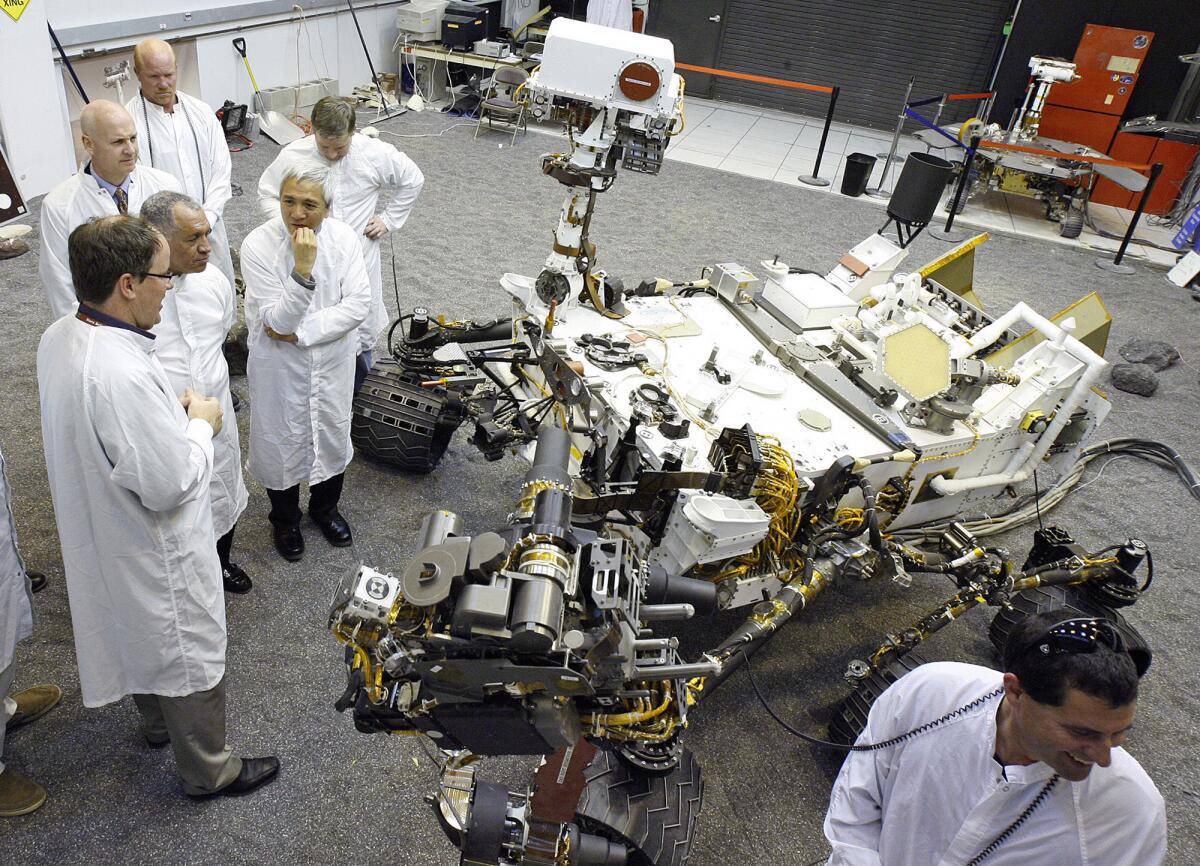NASA’s rover Curiosity can navigate Mars terrain on its own

If the NASA rover Curiosity runs into any obstacles on its trek to a mountain in the middle of an ancient crater on Mars, a new navigation system should steer it to safety.
Engineers at the Jet Propulsion Laboratory in La Cañada Flintridge have turned on a technology that allows the rover to drive itself. The rover used the system for the first time on Tuesday.
The 1-ton rover, which landed on Mars in August 2012, won’t be able to take a joy ride on the Red Planet. Rover drivers and scientists who work at JPL will continue to plan its schedule and decide its destination. But the navigation technology, which was also used on its predecessor, Opportunity, allows the rover to analyze images while driving to determine possible hazards.
“It can measure the shape of the world in front of it,” said Mark Maimone, rover mobility engineer and rover driver at JPL.
Curiosity is currently on its way to Mount Sharp, a 3-mile-high mountain that is the main science target of the two-year mission.
The automatic navigation system is similar to technology used on self-driving cars. But, unlike cars on Earth, Curiosity doesn’t have to watch out for other vehicles or pedestrians.
“On Mars, we can presume that the world doesn’t really change much,” said Maimone. “It is easier to drive when there aren’t any people around.”
The rover snaps a photo every few minutes and evaluates conditions. But a much more advanced system would be required for a driverless car on Earth, where there are many obstacles, stop signs and traffic lights.
Still, the technology can allow Curiosity to get out of a rough area. The rover can also figure out how to escape a maze, said Maimone. There was a delay in using the technology on the rover after a computer malfunction earlier this year.
But on Aug. 27, Curiosity was able to drive over terrain that engineers and scientists at JPL could not confirm was safe. The drive over uncharted terrain covered 33 feet.
“We could see the area before the dip, and we told the rover where to drive on that part,” JPL rover driver John Wright said in a statement. “We could see the ground on the other side, where we designated a point for the rover to end the drive, but Curiosity figured out for herself how to drive the uncharted part in between.”
--
Follow Tiffany Kelly on Google+ and on Twitter: @LATiffanyKelly.
RELATED: